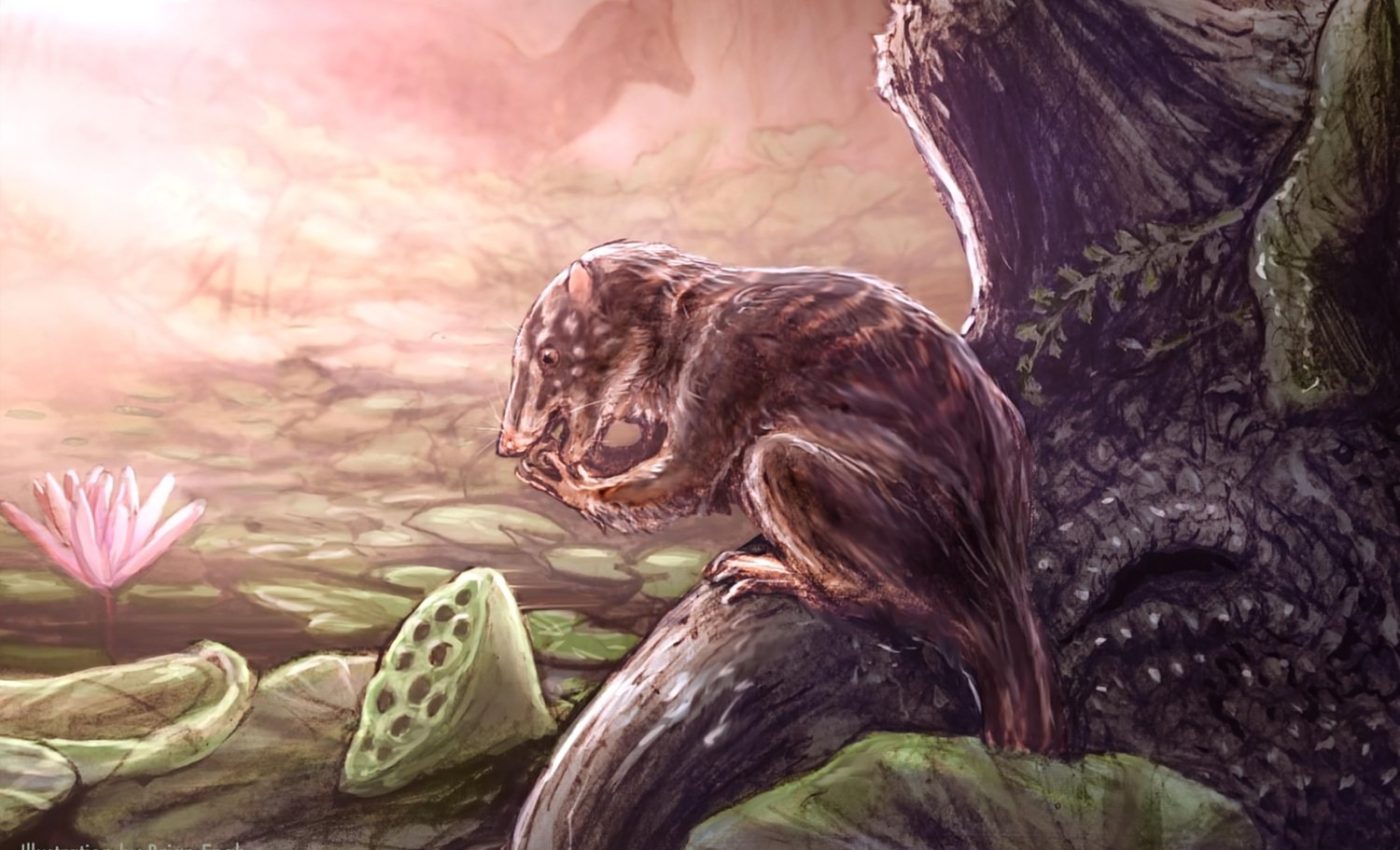
‘Swamp dweller’ found in Colorado lived among the dinosaurs
A team of paleontologists has made a significant discovery near Rangely, Colorado – unearthing a new species of fossil mammal about the size of a muskrat that lived during the age of dinosaurs.
Led by paleontologist Jaelyn Eberle from the University of Colorado Boulder, the researchers published their findings in the journal PLoS ONE.
Small mammal among Colorado dinosaurs
The fossil, identified from a jawbone fragment and three molar teeth, has been named Heleocola piceanus, which means “swamp dweller” in Latin.
This small mammal roamed Colorado roughly 70 to 75 million years ago, during a period when much of the American West was submerged under a vast inland sea.
“Colorado is a great place to find fossils, but mammals from this time period tend to be pretty rare,” said Eberle, who is also the curator of fossil vertebrates at the CU Museum of Natural History. “So it’s really neat to see this slice of time preserved in Colorado.”
Rare find in a familiar fossil landscape
While the fossils of massive Late Cretaceous dinosaurs like Tyrannosaurus and Triceratops ancestors dominate the era’s narrative, the discovery of H. piceanus reveals that smaller creatures also thrived alongside these giants.
Despite its modest size compared to dinosaurs, H. piceanus was relatively large for mammals of that era, according to Eberle.
Eberle is particularly pleased to see this discovery come from Rangely, a small town in northwest Colorado near the Dinosaur National Monument.
“It’s a small town, but, in my experience as a paleontologist, a lot of cool things come out of rural environments,” she said. “It’s nice to see western Colorado have an exciting discovery.”
Snapshot of Colorado’s ancient ecosystem
The discovery helps to reconstruct a picture of Colorado’s ancient landscape, one that would be barely recognizable today.
Study co-authors John Foster and ReBecca Hunt-Foster have been exploring this part of Colorado for about 15 years.
They describe the region from 70 million years ago as a boundary where land met water – teeming with life such as turtles, duck-billed dinosaurs, and large crocodiles in wetlands and estuaries.
“The region might have looked kind of like Louisiana,” said Hunt-Foster, a paleontologist at Dinosaur National Monument. “We see a lot of animals that were living in the water quite happily like sharks, rays, and guitarfish.”
Foster recalls the excitement of spotting the mammal jaw fragment within a slab of sandstone collected in 2016.
“I said, ‘Holy cow, that’s huge,’” said Foster, a scientist at the Utah Field House of Natural History State Park Museum in Vernal, Utah.
A giant among its peers
Before the extinction event that wiped out non-avian dinosaurs around 66 million years ago, most mammals were relatively small, about the size of modern mice or rats.
Eberle, who typically identifies these ancient mammals by their tiny teeth, noted that H. piceanus was an outlier – likely weighing over two pounds, much larger than most other mammals from the same period. Its teeth suggest a diet of plants, supplemented by insects or other small animals.
While much attention is focused on dinosaurs, this discovery emphasizes the importance of ancient mammals in understanding ecosystems of the Late Cretaceous.
“They’re not all tiny,” Eberle said. “There are a few animals emerging from the Late Cretaceous that are bigger than what we anticipated 20 years ago.”
Preserving invertebrate fossils
Hunt-Foster highlighted the importance of the Mountain West for fossil enthusiasts and researchers, urging visitors to respect these historical treasures.
She advised people who come across vertebrate fossils, such as those of dinosaurs, to refrain from collecting them and instead document the location with a photo and inform a museum or public land agency.
“We have scientists that come from all over the world specifically to study our fossils,” she said. “We really are lucky.”
The discovery of Heleocola piceanus not only enriches our understanding of prehistoric Colorado but also serves as a reminder of the region’s rich paleontological heritage and the need to protect it for future generations.
Image Credit: Brian Engh -LivingRelicProductions.com, courtesy of Utah Field House of Natural History
—–
Like what you read? Subscribe to our newsletter for engaging articles, exclusive content, and the latest updates.
Check us out on EarthSnap, a free app brought to you by Eric Ralls and Earth.com.
—–













